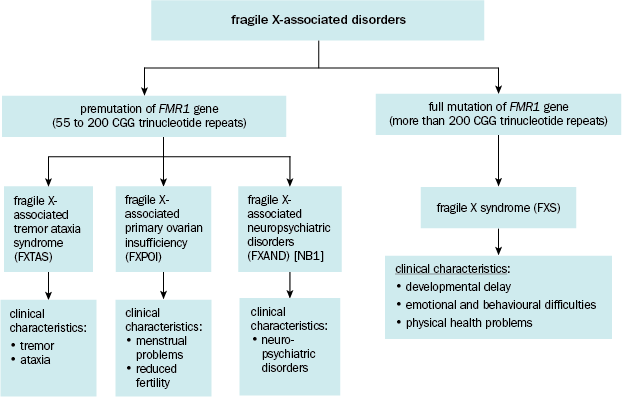Overview
Fragile X syndrome (FXS) results from a full mutation of the fragile X mental retardation 1 (FMR1) gene on the long arm of the X chromosome. The term ‘fragile X’ is derived from the karyotype appearance of the affected site (ie pinched or fragile) when cultured in a folate-free medium. The full mutation is an expansion of the gene of over 200 nucleotide triplet repeats.
The FMR1 gene makes a protein, FMR1 protein (FMRP), which is important for typical neurological development. In people with the full fragile X mutation, this gene is methylated which leads to lower or absent production of FMRP. People with a shorter expansion of the gene (55 to 200 repeats) have ‘fragile X premutation’, which is associated with:
- fragile X-associated primary ovarian insufficiency (FXPOI)
- fragile X-associated tremor ataxia syndrome (FXTAS)
- fragile X-associated neuropsychiatric disorders (FXAND).
For advice on the management of disorders associated with fragile X premutations, see the National Fragile X Foundation treatment guidelines.
See Fragile X-associated disorders for fragile X-associated disorders.

FMR1 = fragile X mental retardation 1
NB1: Other conditions associated with fragile X premutation may be identified.
Adapted with permission from the Fragile X Alliance Clinic, Melbourne.
